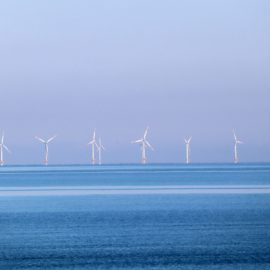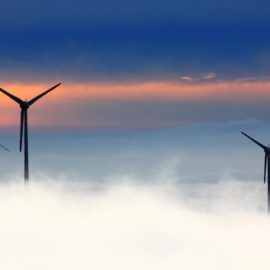
When there is a problem – it is always good to hear some good news. Bob Marshall has some for our coasts.
No, there has been no dramatic change in Louisiana’s current storyline: Our bottom third remains heading for a watery grave before the end of the century unless the world rapidly reduces carbon emissions that are causing the fastest acceleration of sea level rise in 2,000 years. But there has been a steady stream of developments that give some hope. For instance:
There’s been a breakthrough in green hydrogen technology. Hydrogen is the ideal clean energy source because it’s produced from water and when it burns it emits only water vapor. But large-scale hydrogen production has always used fuels that release greenhouse gases or require them to be captured and stored. The green process uses only clean energy such as solar or wind to run the process. Recently green hydrogen producers formed a partnership to reduce costs at scale, and think they can increase production 50 fold in the next six years. If it happens, it could help dramatically reduce emissions.
A bipartisan group of U.S. senators is backing a bill to expand the existing tax credit for electric vehicle charging infrastructure, such as charging stations. Cars produce roughly 30% of all U.S. emissions, which are the second-most in the world by volume and the highest per-capita. Marketing shows Americans are ready to go electric, if they can be assured of a place to recharge.
A rapidly expanding move by automakers toward electric fleets is one reason for that bipartisanship. General Motors says it will introduce at least 30 electric models worldwide next year and plans to end production of gas or diesel cars and light trucks by 2035. Next year Ford is introducing an all-electric version of the F-150 pickup — the largest selling vehicle in the U.S. for the last 44 years — to go with its already available electric Mustang. The U.S. is not alone; every major carmaker in the world has accelerated plans to go electric.
Major airlines announced their commitment to reduce emissions, too. The first step is developing and using “sustainable alternative fuels,” which currently involves lower-emitting synthetics but green hydrogen may be just around the corner.
River sediment diversions, Louisiana’s only affordable way to address its sinking, crumbling coastal zone, passed a milestone when the environmental impact study on the Mid-Barataria diversion was mostly thumbs-up. There is still a long way to go, but we might now be only 6 to 7 years away from actually rebuilding those wetlands.
Louisiana state government and 19 coastal parishes will share $110 million for coastal restoration and protection from offshore oil mineral royalties this year. That’s about $46 million less than the previous year due to a drop in oil and gas production during the economic downturn related to the pandemic.
American entrepreneurial spirit continues to produce new ways to help in the climate crisis. A study showed how covering the nearly 4,000 miles of canals in California’s extensive water transport system with solar panels could save 63 billion gallons of water annually in that drought-stricken state, while providing 13 gigawatts of power, enough electricity to power over 1 million homes. Other companies are exploring ways to help reduce warming by blocking the sun’s rays and reducing the size of hurricanes by putting bubbles in the ocean.
And perhaps most importantly, President Biden’s American Jobs Plan will reverse four years of climate failure under President Donald Trump. It includes $16 billion to employ union oil and gas workers to cap orphaned oil and gas wells and clean up mines; $35 billion in clean tech R&D to address the climate crisis; $174 billion to promote electric vehicles through consumer incentives, supply chain support, charging network build outs, school bus electrification, and electrifying the federal fleet; $100 billion for power grid modernization and resilience; and $213 billion to build, modernize, and weatherize affordable housing.
So there is hope and we do need it!



